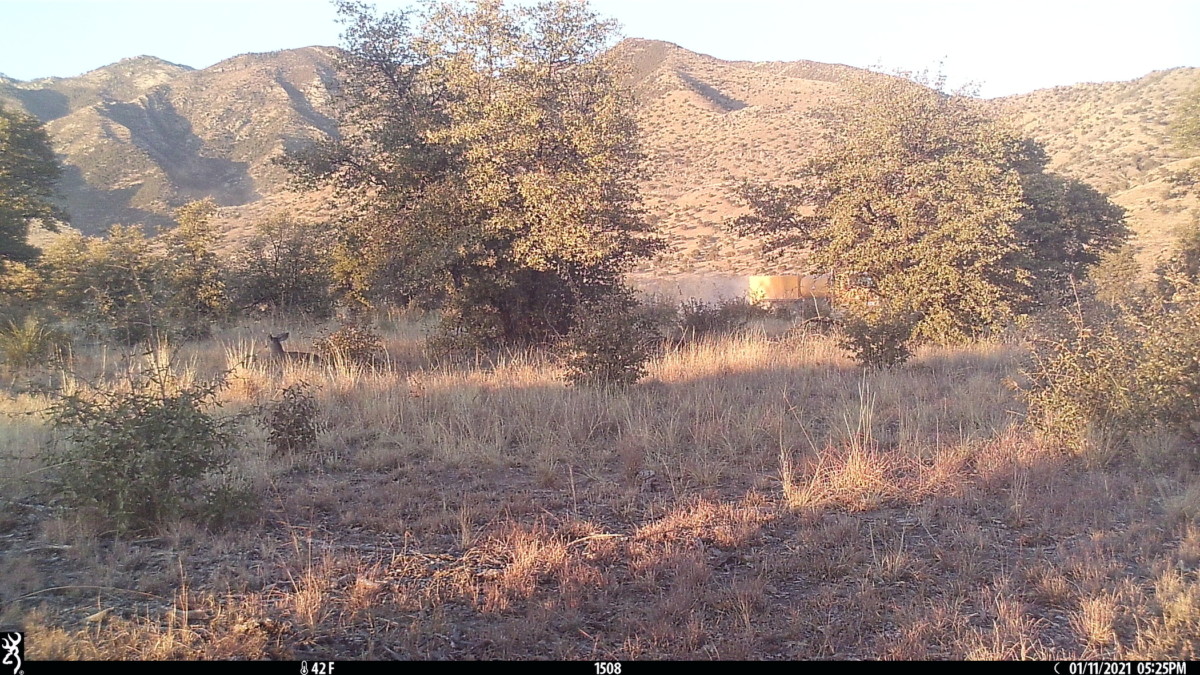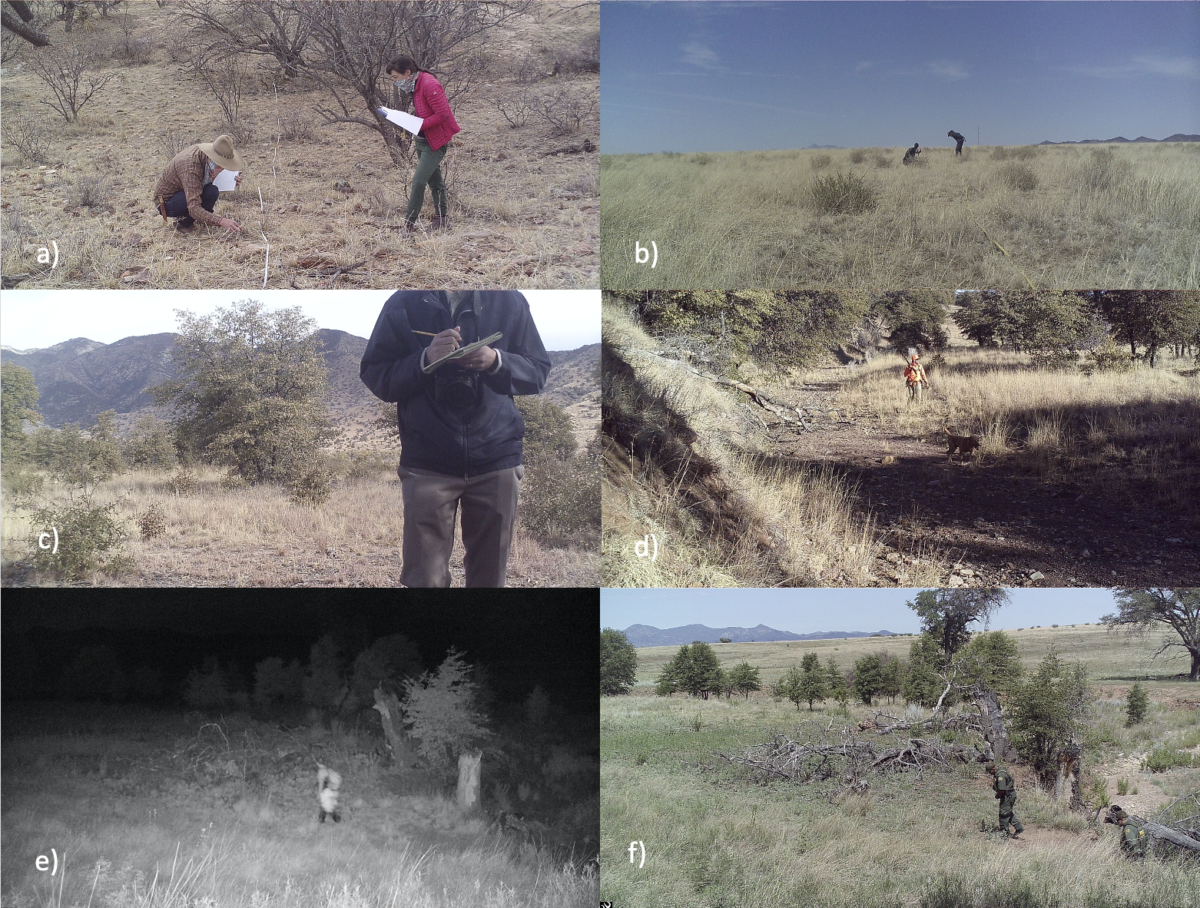
Photo caption: A white-tailed deer rests near an oak tree (left) while an orange construction vehicle drives quickly along a the border road during active wall construction in the Huachuca Mountains in January 2021.
Border Wildlife Study cameras document so much more than just wild animals on the move at the border. They document weather, changes in the greenness of vegetation over the seasons, cattle grazing, and the people using our public lands.
Since March 2020, our gridded array of 58 cameras have amassed 20,600 wildlife images and 17,400 cattle images, while only detecting 1,168 images of humans, domesticated dogs, and vehicles. Sixty-nine percent of these observations are vehicles—Border Patrol and construction vehicles—and these are primarily from one camera located at the far eastern end of our study.
Watch our webinar report on the first year of the Border Wildlife Study.
In July 2020, border road and wall construction across the southern foothills of the Huachuca Mountains began to extend an older stretch of 18-foot-tall border wall at Coronado National Memorial westward into our Border Wildlife Study area. Construction activity brought numerous road and wall-building equipment into the area and resulted in significantly higher human presence on our cameras in the area closest to the activity.

Photo caption: A sample of the humans observed on foot by our cameras including a-b) our study field crew, c) a reporter, d) a hunter with domestic dog, e) a traveler alone at night, and f) two Border Patrol agents following the path of the lone traveler five hours later.
Most of our study cameras are further away from roads, so their detections of humans reflect an unbiased sample of people present along the border in Coronado National Forest and the San Rafael State Natural Area. Human detections include Border Patrol agents, the ranchers (often on horseback) that run cattle over the area, hunters and their dogs, our field crew, and also individuals traveling through the area who may have crossed the border illegally.
Over the 30-mile transect our cameras cover, only a handful of potential migrants are photographed every month.
Related Reading:
